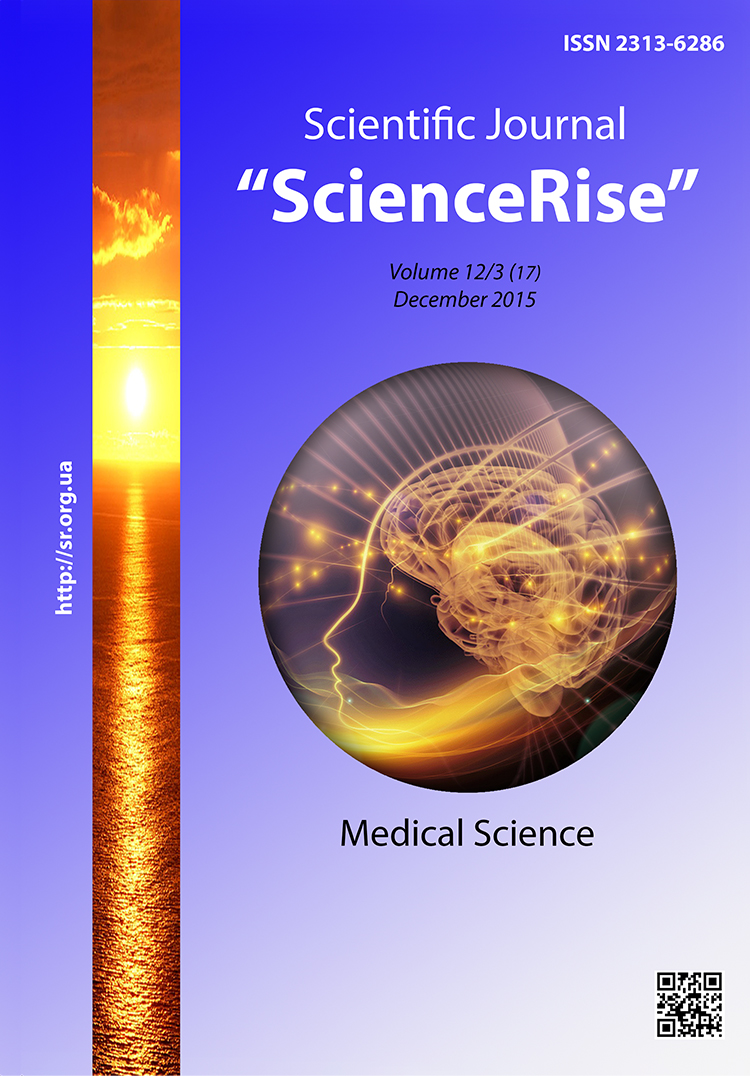The special features of emotional intelect of the puplic health institution leaders
DOI:
https://doi.org/10.15587/2313-8416.2015.56930Keywords:
emotional intellect, gender, age, public health institution leadersAbstract
Introduction. In conditions of reformation of the medical sphere an ability to make administrative decisions, to form effective interpersonal relations, to create the teams of adherents is very important for the leaders of public health institutions (PHI). It is possible because of the certain level of emotional intellect.
Aim. To define the age- and gender-related special features of the general emotional intellect (GEI) and its components in the leaders of PHI.
Method. There was carried out psychological examination of 72 PHI leaders – 38 women and 34 men by the methodology of N. Hall, that allows to fix the level of 5 components of emotional intellect (emotional erudition (EE), emotion management (EM), self-motivation (SM), empathy (EM), emotion identification (EI)) and also GEI level that is a sum of these components. PHI leaders were divided into 4 age groups: 1 group – 30–39 years old (n=7), 2 group 40–49 years old (n=25), 3 group – 50–59 years old (n=20), 4 group – from 60 and older (n=20). The age and gender contingent of respondents corresponds to the general sampling as a whole.
Results. There was established that the women leaders have the reliably higher GEI level than the men leaders (р<0,05). The aforesaid is conditioned with reliably higher values of EE (р<0,05), EI (р<0,05), ЕМ (р<0,001), SМ (р<0,05) in women. It is possible that these components provide the gender special features of formation of interpersonal relations in leaders. In women leaders was detected the reliably higher level of SM than in men that indicates their higher motivation to succeed in professional activity. There were established the age-related special features of GEI in PHI leaders. The reliable increase of GEI level takes place at the age of 30-60 years with maximal value in the group of 50-59 years, after 60 years was observed a tendency to its decrease. In PHI leaders was detected the lowest level of EM among all GEI components regardless of gender and age.
Conclusions. The leaders of PHI have certain gender- and age-related special features of GEI and its components that must be taken into account at professional selection of candidates for leading posts in PHI. The further studies will be devoted to the determination of the dynamics of GEI changes during professional activity of PHI leaders
References
Minott, J., Helms, D., Luft, H., Guterman, S., Weil, H. (2010). The group employed model as a foundation for health care delivery reform. Issue Brief (Commonw Fund), 83, 1–24.
Egorov, I. A. (2006). Vlijanie urovnja jemocional'nogo intellekta rukovoditelej organizacii na vypolnenie upravlencheskih funkcij. Moscow, 24.
Provotorova, N. V. (2010). Systema profesijnoi' ta upravlins'koi' motyvacii' derzhavnyh sluzhbovciv jak predstavnykiv socionomichnyh profesij. Lygansk, 215.
Petrovskaja, A. S. (2007). Jemocional'nyj intellekt kak determinanta rezul'tativnyh parametrov i processual'nyh harakteristik upravlencheskoj dejatel'nosti. Jaroslavl, 25.
Wong, C.-S., Law, K. S. (2002). The effects of leader and follower emotional intelligence on performance and attitude. The Leadership Quarterly, 13 (3), 243–274. doi: 10.1016/s1048-9843(02)00099-1
Bachman, J., Stein, S., Campbell, K., Sitarenios, G. (2000). Emotional Intelligence in the Collection of Debt. International Journal of Selection and Assessment, 8 (3), 176–182. doi: 10.1111/1468-2389.00145
Prati, L. M., Douglas, C., Ferris, G. R., Ammeter, A. P., Buckley, M. R. (2003). Emotional intelligence, leadership effectiveness, and team outcomes. The International Journal of Organizational Analysis, 11 (1), 21–40. doi: 10.1108/eb028961
Mayer, J. D., Salovey, P. (1993). The intelligence of emotional intelligence. Intelligence, 17 (4), 433–442. doi: 10.1016/0160-2896(93)90010-3
Churakov, R. (2005). Jemocional'nyj intellekt v menedzhmente. u-journal, 1. Available at: http://www.u-journal.com/sections/management_psychology
Psilopanagioti, A., Anagnostopoulos, F., Mourtou, E., Niakas, D. (2012). Emotional intelligence, emotional labor, and job satisfaction among physicians in Greece. BMC Health Services Research, 12 (1), 463. doi: 10.1186/1472-6963-12-463
Goulman, D., Bojcis, R., Makki, Je. (2005). Jemocional'noe liderstvo: iskusstvo upravlenija ljud'mi na osnove jemocional'nogo intellekta. Moscow: Al'pina Biznes Buks, 300.
Bar-On, R. (1997). Emotional Intelligence Inventory (EQ-i). Technical Manual. Toronto.
Mayer, J. D., Salovey, P., Caruso, D. (2000). Models of Emotional Intelligence. New York: Cambridge, 396–420. doi: 10.1017/cbo9780511807947.019
Jas'ko, B. A., Kazarin, B. V., Kamushkina, L. V. (2010). Vrach-rukovoditel' kak sub’ekt vlasti i menedzhmenti. Sovremennye problemy nauki i obrazovanija, 2, 72–75.
Manjanina, T. V. (2010). Jemocional'nyj intellekt v strukture psihologicheskoj kul'tury lichnosti. Barnaul, 24.
Shabaninejad, H., Tahmasbi, A., Baratimarnani, A., Mehralian, G., Gorgi, H., Ahmadi, A. (2015). The impact of emotional intelligence on managers′ performance: Evidence from hospitals located in Tehran. Journal of Education and Health Promotion, 4 (1), 63. doi: 10.4103/2277-9531.162383
Gourzoulidis, G., Kontodimopoulos, N., Kastanioti, C., Bellali, T., Goumas, K., Voudigaris, D., Polyzos, N. (2014). Do Self-Perceptions of Emotional Intelligence Predict Health-Related Quality of Life? A Case Study in Hospital Managers in Greece. Global Journal of Health Science, 7 (1). doi: 10.5539/gjhs.v7n1p210
Rajgorodskij, D. Ja. (2005). Prakticheskaja psihodiagnostika. Metodiki i testy. Samara: Izd. dom «BAHRAH – M», 672.
Downloads
Published
Issue
Section
License
Copyright (c) 2015 Тетяна Андріївна Вежновець

This work is licensed under a Creative Commons Attribution 4.0 International License.
Our journal abides by the Creative Commons CC BY copyright rights and permissions for open access journals.
Authors, who are published in this journal, agree to the following conditions:
1. The authors reserve the right to authorship of the work and pass the first publication right of this work to the journal under the terms of a Creative Commons CC BY, which allows others to freely distribute the published research with the obligatory reference to the authors of the original work and the first publication of the work in this journal.
2. The authors have the right to conclude separate supplement agreements that relate to non-exclusive work distribution in the form in which it has been published by the journal (for example, to upload the work to the online storage of the journal or publish it as part of a monograph), provided that the reference to the first publication of the work in this journal is included.

